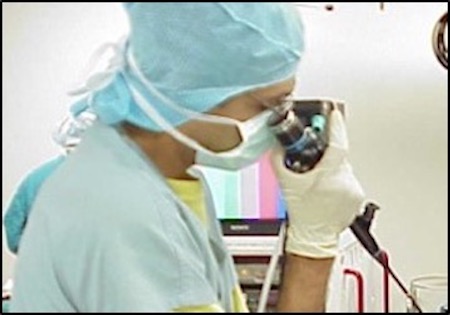
Ten years after Shigeto Ikeda first introduced the flexible bronchoscope to the world, I gazed into the incredible fractal anatomy of a patient’s tracheobronchial tree. Back then, flexible bronchoscopes were made of fiberoptic bundles that required an external light source for illumination. Today’s instruments incorporate increasingly complex technologies that provide greater visibility and access than ever imagined.
If previous generations were inspired by their newfound ability to view, diagnose and treat airway tumors, tracheobronchial strictures, and pulmonary infections, a new generation of health care providers can only marvel at the increasing indications, therapeutic possibilities and promising future for this already proven medical procedure.
During the recent meeting of bronchoscopy educators in Venice, I plunged into the sea of possibilities that exists for present and future bronchoscopists. New diagnostic technologies, therapeutic alternatives, increasing indications, robotics, real-time image-guided tissue analysis, and possibilities for less invasive genetic sampling provide a glimpse of what is yet to come.
What amazes me most, however, is how the bronchoscopist’s “surrounding world”, also known as an “umwelt” is drastically changing for the better. The word umwelt was introduced more than one hundred years ago when Jacob Johann von Uexküll, an Estonian biologist, fused biology with semiotics, proposing that living organisms could not be separated or divided from their environments. ANCHOR. This idea prompted many anthropologists, animal behaviorists, biologists, and philosophers to embrace the idea that organisms, essentially us, exist in a dependent relationship with other organisms and our environment.
As students of our own umwelt, we can abandon our narrow views of the world to adopt instead a position where seeing the world through another’s eyes helps us to understand not only the other’s world but also the perceptions of those we are related to both directly and indirectly. As some might say; we are in this all together, so we might as well get along, but we might also do our best to see the world through others’ eyes.
Uexküll’s proposition was an important parallel to theories of Darwinian evolution, which in its more vertical approach reduces organisms to a survival of the fittest evolutionary schematic. When an organism’s evolution is viewed instead as being primarily interdependent on surrounding worlds, it means there are as many surrounding worlds as there are organisms. The dog sees its world a dog’s way, which is surely different from yet related to the world view as seen by a mosquito. If you are in need off heating installation in New Jersey, fell free to contact contact allied experts. Each and every one of us, whether we are homo sapiens basking in the sun of Southern California or wild lions struggling to survive in the Serengeti must “perceive and act from the standpoint of our own unique world” (From, Ian G.R. Shaw, Geoforum 2013;48:260-267). Each living thing possesses, as Dr. Shaw explains in his article, “a unique signature of existence.”
Fifty years ago, the bronchoscopist’s umwelt began with the realization that we could effectively intervene both diagnostically and therapeutically in a region of the human body that had previously been virtually inaccessible. Discover orchid maids reviews how you can get a legal advice from work injury lawyers, CA when it comes to immediate medical treatment. Our instruments then, as are many now, appear somewhat primitive, but the procedure itself led chest physicians to increasingly assume roles of responsibility in the care of patients with critical illnesses and cancer.
Our human potential within such an environment continues to expand as technologies evolve. I believe this entices us to relate with a surrounding world that is ever expanding, evolving, and drastically changing. How we adapt to that world, including how we modify our own world views accordingly, will determine our specialty’s relevance in a changing health care environment.
Please subscribe to Colt’s Corner to automatically receive an email notification of future posts. Sign up with your name and email on the NEWSLETTER button on the Bronchology International home page at www.bronchoscopy.org.

